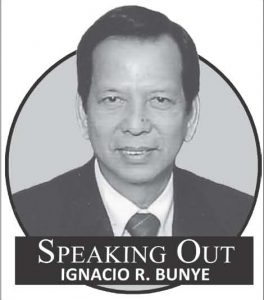
Seventy-five years ago last month (Jan. 9, 1945) Allied forces landed in Lingayen Gulf in the second major land offensive to reclaim the Philippines from Japanese occupation forces. The first occurred in Leyte on Oct. 20, 1944.
The Lingayen operation is the subject of a forthcoming book “From Leyte to Bessang Pass” written by this author to commemorate the 75th anniversary of the end of World War II in the Philippines.
“From Leyte to Bessang Pass” was based on volumes of books and online materials written about the subject by military historians, foreign and Filipinos alike. This writer culled from these available information, presented the events as simply and, as much as possible, sequentially as they happened. This writer also endeavored to retell the story – minus the military jargon – from a Filipino perspective.
Some excerpts from the book:
“Lingayen Gulf became a strategic theater of operations during World War II for both the Japanese forces and the Allied Forces. Three years earlier, on Dec. 22, 1941, the forces of Lt. General Masaharu Homma landed at various points – Agoo, Caba, Santiago and Bauang – before pushing towards Manila.
“Now it was the Allied Forces’ turn. On Jan. 6, 1945, US ships commanded by Admiral Jesse Oldendorf started bombarding suspected Japanese positions along the beaches of Lingayen Gulf. However, by the time the Americans landed in Lingayen, the Japanese forces, under the overall command of General Tomoyuki Yamashita, had already withdrawn farther inland.
“At the 32-kilometer Lingayen beachhead, there was hardly any land-based Japanese resistance. The pre-landing bombardment, far from terrifying local residents, sounded like music to their ears. Lingayen town folks came out and welcomed the allied forces in a fiesta atmosphere.
“On the 8th, it was observed that in the town of Lingayen… Filipinos had begun to form a parade, complete with United States and Philippine flags. Fire was shifted from that area.
“On Jan. 9 (D82), the US 6th Army, under the command of General Walter Krueger, started their beach assault. A total of 203,608 soldiers eventually landed over the next few days, establishing a 20 mile (32 km) beachhead, stretching from Sual, Lingayen and Dagupan to the west and San Fabian to the east.”
***
“As in Leyte, months earlier, it was the suicide kamikaze pilots who provided the bigger threat to the Allied invasion armada. From Jan. 4 to 12, a total of 24 ships were sunk and another 67 were damaged by kamikazes. These included the battleships USS Mississippi, New Mexico and Colorado, the heavy cruiser HMAS Australia, the light cruiser USS Columbia and the destroyers USS Long and USSS Hovey.”
***
“From Lingayen, Allied troops pushed southward. Along the way, Allied troops handed out rifles and grenades to Filipino resistance fighters. They also liberated American troops who have been initially interned in Camp O’Donnell in Capas, Tarlac during the early stages of the war. Before long, Allied troops were knocking at the gates of Manila.”
***
Note: You may wish to share the foregoing via Facebook, Twitter or Linked-In./WDJ

